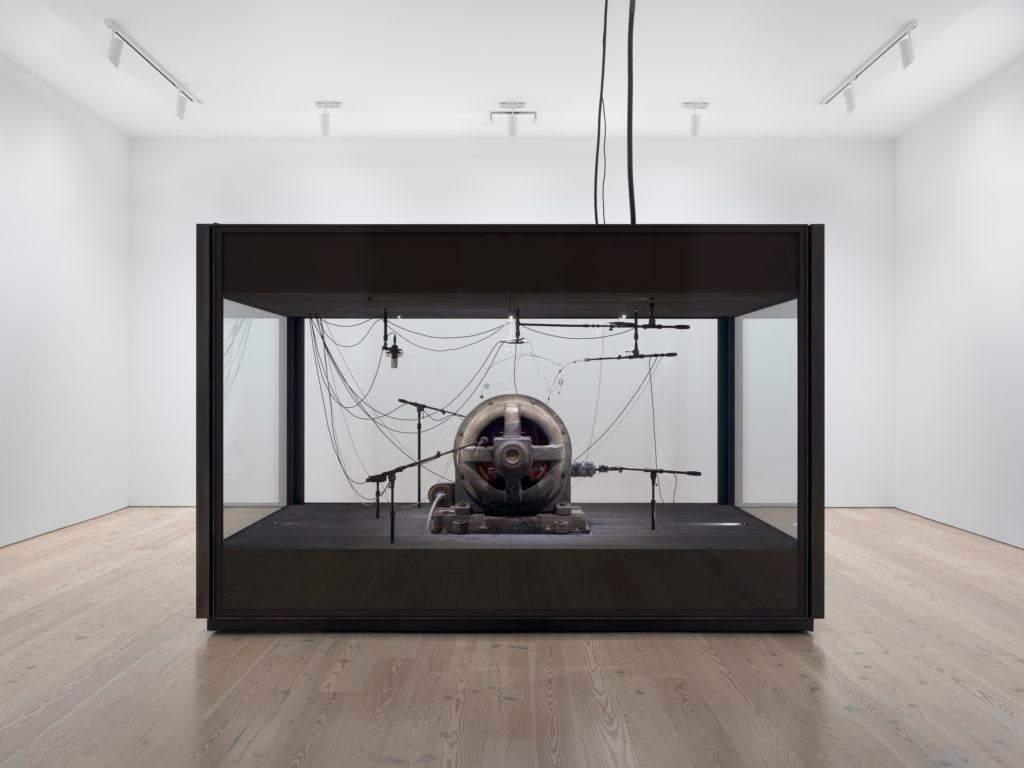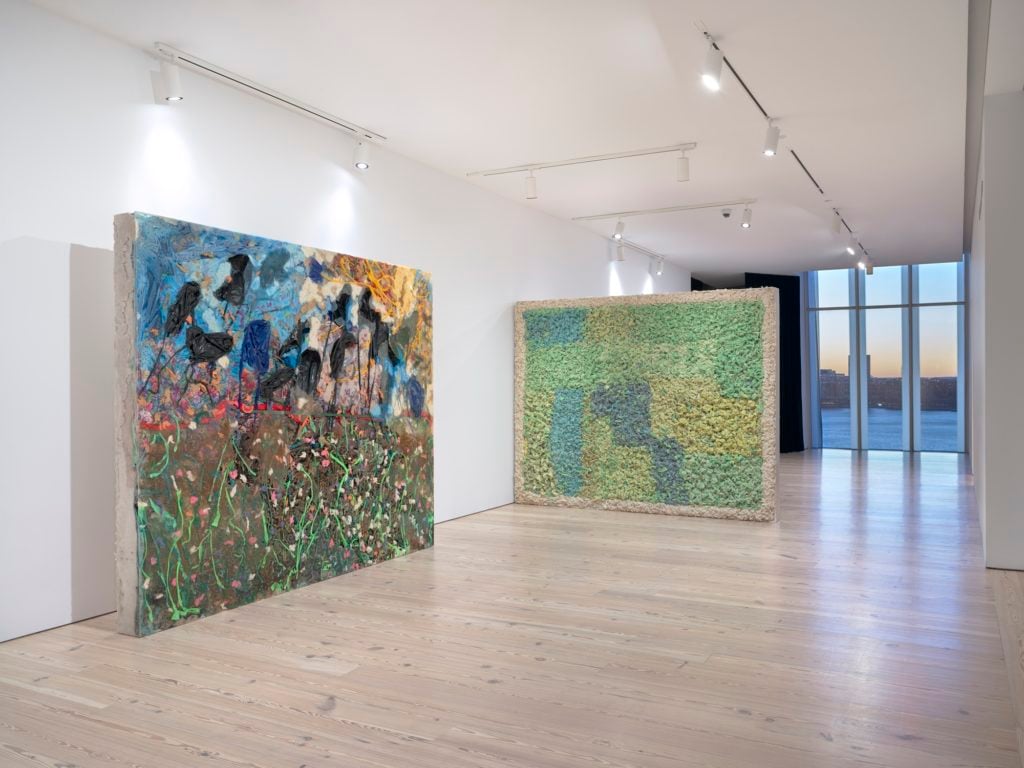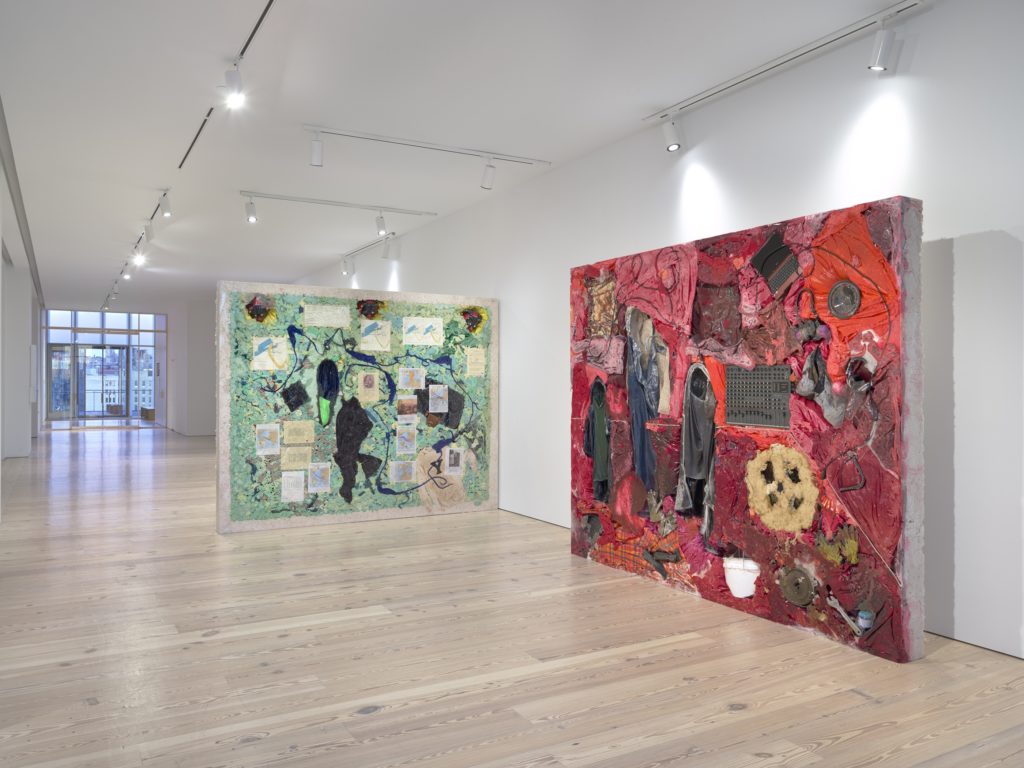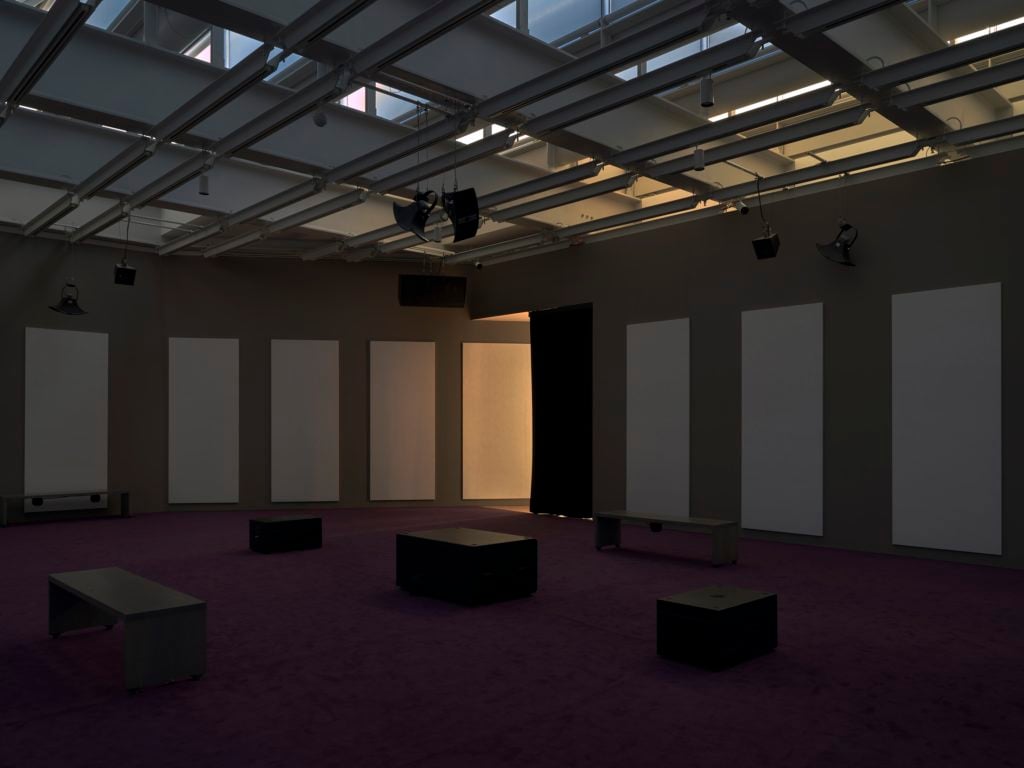On View
Artist Kevin Beasley Has Repurposed the Cotton Gin to Give New Shape to the History of Slavery
The artist's latest work transforms a tool of systemic oppression into one for spiritual transcendence.

The artist's latest work transforms a tool of systemic oppression into one for spiritual transcendence.

Nico Wheadon

Perception is not the work of the eyes alone. Through his signature melding of sculpture, sound, and performance, genre-defying artist Kevin Beasley reminds viewers of just that. His solo exhibition at the Whitney, “A view of a landscape,” presents works that are at once immediate and historical—and are as concerned with giving shape to memory as they are with deconstructing the past’s contemporary resonance.
With roots in the Antebellum South, the conceptual landscape Beasley constructs transcends spatial, temporal, and sensory boundaries. The show examines the troubled, living legacy of cotton and centers on a repurposed relic of early American industrialization—the cotton gin motor—which Beasley has encased within a soundproof vitrine. The drone of the machine is captured, manipulated, and transmitted to an adjacent room, and this disjuncture between the visual and the aural, motion and silence, both draws us in and casts us out. A monumental offering, this sculpture serves as an anchor of the exhibition, and moors our investigations of labor, race, and class to the history of slavery in the United States.
Three large, two-sided slab sculptures stand in proximity to the motor, both directing and obstructing the visitor’s path towards the motor’s dislocated soundscape in the adjacent room. Wall labels expound on the origins of the slabs: “These narrative reliefs—a sculptural form that goes back to antiquity—chronicle Beasley’s experiences leading to his procurement of the cotton-gin motor upon which this exhibition is grounded, in 2012. The works were conceived as free-standing sculptures meant to be viewed from different vantages.”

On the left, Kevin Beasley’s The Reunion (2018); on the right, Campus (2018). Courtesy Casey Kaplan, New York. Photo: Ron Amstutz.
The stories captured within the reliefs draw from personal and collective memory, augmenting the emotional depth of the world Beasley invites us to inhabit. Here, as he does throughout the exhibition, Beasley nudges viewers to shift their stances to fully absorb the dense layers of information embedded within his works.
The first slab one encounters is The Reunion (2018), a vibrantly saturated landscape that draws quite literally from the land. Using a markedly different visual language than that of the cotton gin motor—one of heightened material abstraction—Beasley assembles Virginia cotton, soil, twigs, pine cones, and needles as a backdrop to black and blue du-rags that dance upwards from the earth like weightless figures in a cool breeze. The du-rags bend and twist against a bright blue sky, and towards a dense pool of sunshine-yellow cotton in the upper right-hand corner.
This direct yet poetic reference to Virginia land, and specifically to property which Beasley’s family has owned for decades, materializes the tension between how dreams and trauma—the black imagination and systemic oppression—have been, and continue to be, tied to the land.

On the left, Kevin Beasley’s Campus (2018); on the right, The Acquisition, (2018). Courtesy Casey Kaplan, New York. Photo: Ron Amstutz.
At a 90-degree angle to The Reunion is one side of Campus (2018), rendered in pastel greens and blues. This work’s thick clumps of resin-soaked cotton are deceptively soft, grouped in rectangular clusters that conjure aerial views of croplands and bodies of water. As one rounds the corner on the work, a second and even more detailed landscape pulls into focus, made of the artist’s personal effects: a Yale University School of Art graduation collar, graduation cap and gown, a Yale University sweater, and campus duffel bag. Pages from the Atlas of the Transatlantic Slave Trade, published by Yale University Press in 2015, are interspersed like islands throughout.
Three blackface clown masks peer down at viewers as they attempt to situate themselves in relation to Beasley’s re-figured map. A graduate of Yale’s MFA program, Beasley poignantly critiques the academy’s complicity in upholding systems of oppression and reinforcing problematic depictions of black people, drawing lines of inquiry between his own university experience and that of Eli Whitney (also a graduate) whose invention of the cotton gin in 1793 tied capitalism to slavery—and white profit to black suffering—in ways that resound against the lived experiences of Beasley’s Virginia ancestors.
The final slab sculpture, The Acquisition (2018), is distinct from the others and retains clear semblances of the original objects Beasley so masterfully embeds within the surface of the work. The most legible are a hoodie, work gloves, a bucket, wrench, Acer laptop, and a Samick SM-122 sound mixer, each suspended and buoyed to the surface by thick slabs of resin. These repurposed studio tools dutifully carry the exhibition’s overarching motif of labor, and the stark legibility of the technology snaps viewers back into our contemporary moment.

Installation view of “Kevin Beasley: A View of a Landscape” at the Whitney Museum of American Art. Photo: Ron Amstutz.
As we enter the dark, purple-carpeted listening room—illuminated only by the flickering lights of audio engineering equipment—the tension between what we see and what we hear washes back in. Prefabricated sound panels mounted to the walls take on a sculptural weight, yet almost immediately recede into the background, as the sonic and social sculptures in the room seem to consume more space.
During my visit, people traversed the room at a variety of speeds, meditatively riding undulating waves of sound, stopping only to retrace their steps in search of a lost harmony. Paths converged, diverged, and looped, bringing the inhabitants of the room into unwitting community. At some point along the route, I became acutely aware of Beasley’s genius: Not only has he remastered the cotton gin, a tool of domination, into a defiant musical instrument, he has also remixed its intrinsic rhythm to re-tell the history of slave labor in the United States through equal parts resistance and hope. In this striking work (which throughout the run of the exhibition is the site of various live musical performances) Beasley nods to the long legacy of music as communication—and to sound as a radical tool of spiritual transcendence.